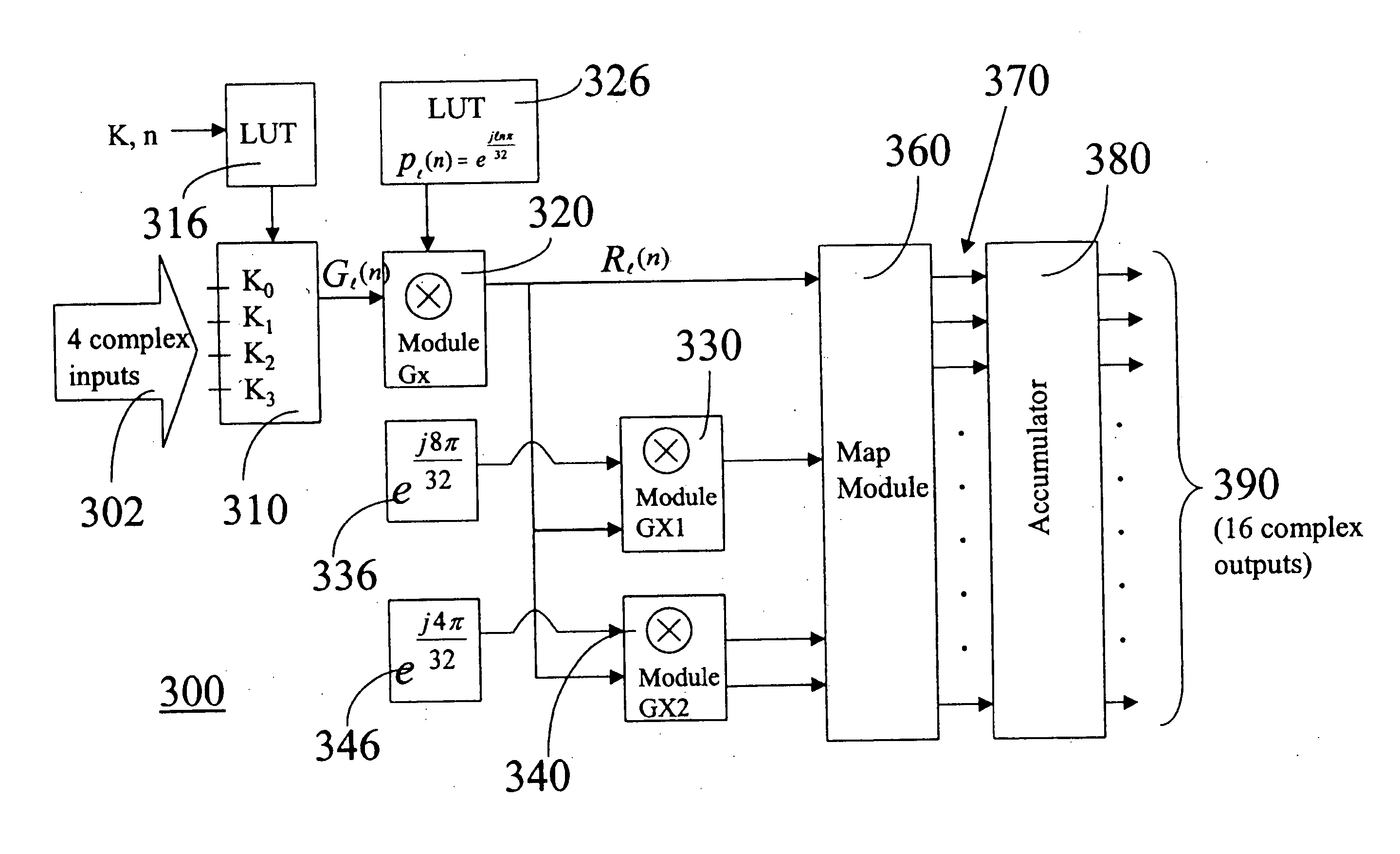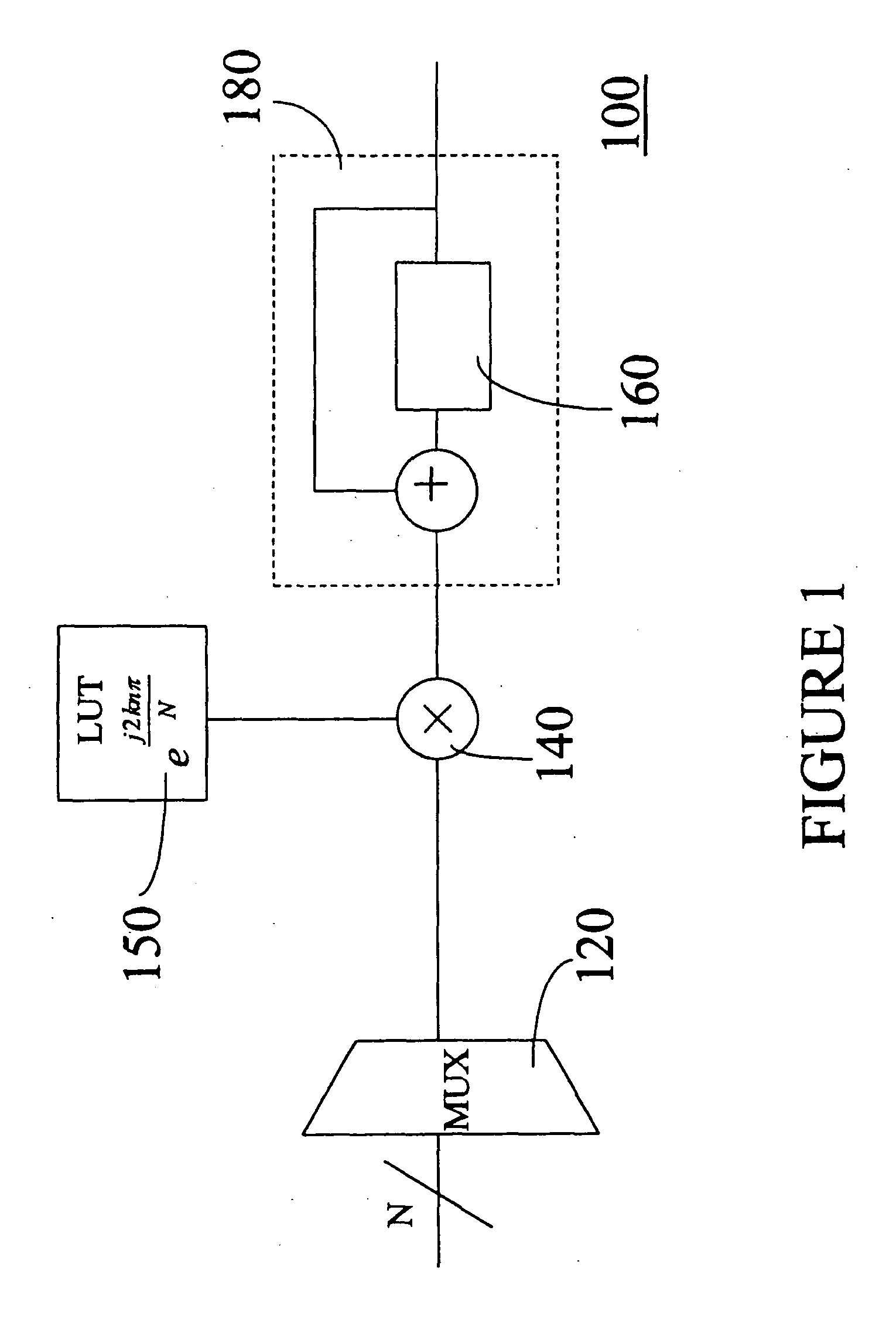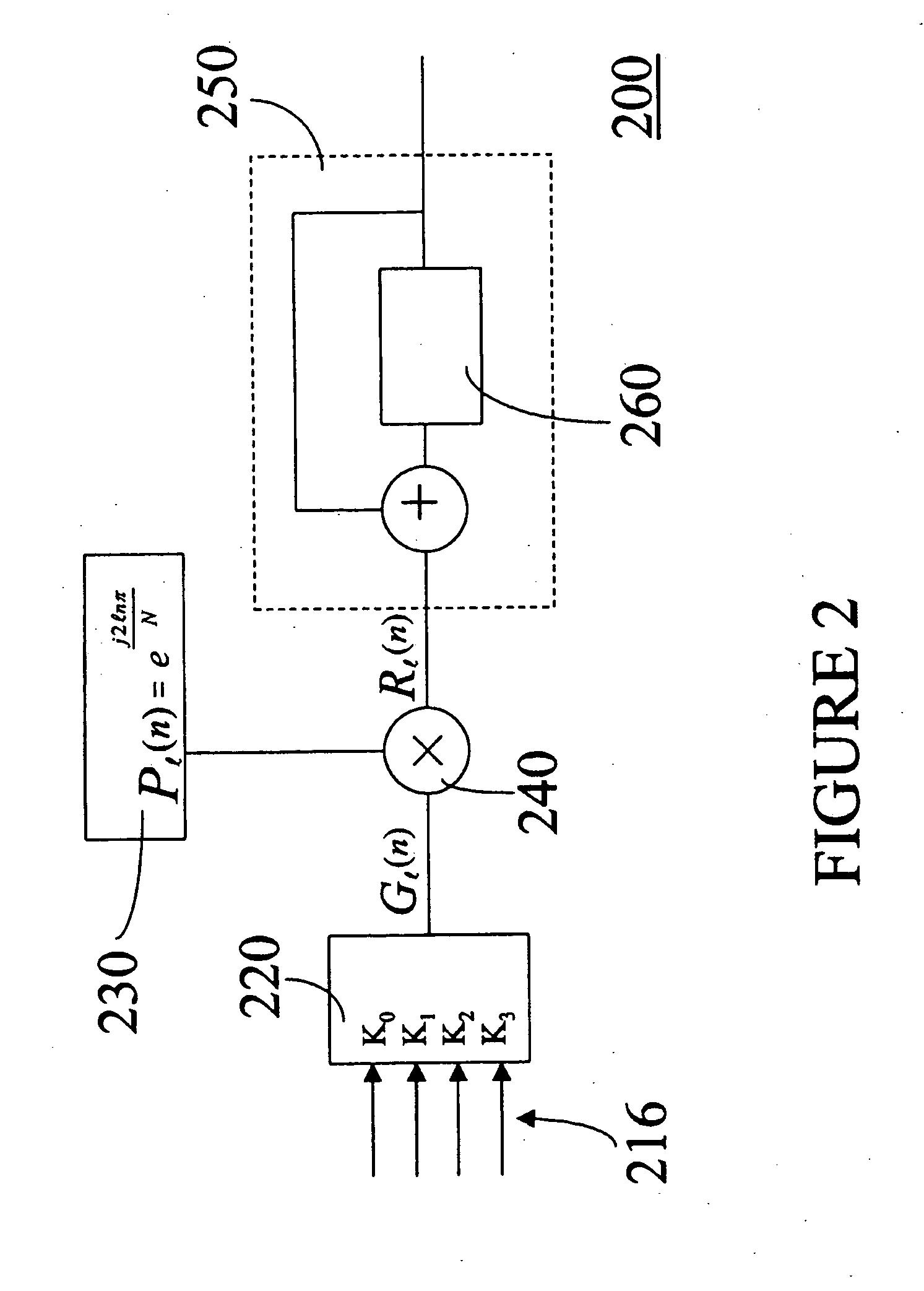Optimized FFT/IFFT module
a hardware implementation and module technology, applied in the field of ofdm systems, can solve the problems of not being very optimum in terms of chip area occupied and power consumption, and achieve the effects of minimizing the number of clock cycles, minimizing the number of complex multipliers, and optimizing hardware implementation
- Summary
- Abstract
- Description
- Claims
- Application Information
AI Technical Summary
Benefits of technology
Problems solved by technology
Method used
Image
Examples
Embodiment Construction
The basic principle of OFDM is to split a high rate data stream into a number of lower rate streams each of which are transmitted simultaneously over a number of sub-carriers. In the IEEE 802.11a standard OFDM modulation scheme, the binary serial signal is divided into groups (symbols) of one, two, four or six bits, depending on the data rate chosen, and the symbols are converted into complex numbers representing applicable constellation points. Each symbol, having a duration of 4 microseconds, is assigned to a particular sub-carrier. An Inverse Fast Fourier Transform (IFFT) combines the sub-carriers to form a composite time-domain signal for transmission. The IEEE 802.11a standard system uses 52 sub-carriers that are modulated using binary or quadrature phase shift keying (BPSK / QPSK), 16 Quadrature Amplitude Modulation (QAM) or 64 QAM. On the receiver side, the Fast Fourier Transform (FFT) can be used to demodulate all sub-carriers. All sub-carriers differ by an integer number of ...
PUM
 Login to View More
Login to View More Abstract
Description
Claims
Application Information
 Login to View More
Login to View More - R&D
- Intellectual Property
- Life Sciences
- Materials
- Tech Scout
- Unparalleled Data Quality
- Higher Quality Content
- 60% Fewer Hallucinations
Browse by: Latest US Patents, China's latest patents, Technical Efficacy Thesaurus, Application Domain, Technology Topic, Popular Technical Reports.
© 2025 PatSnap. All rights reserved.Legal|Privacy policy|Modern Slavery Act Transparency Statement|Sitemap|About US| Contact US: help@patsnap.com



